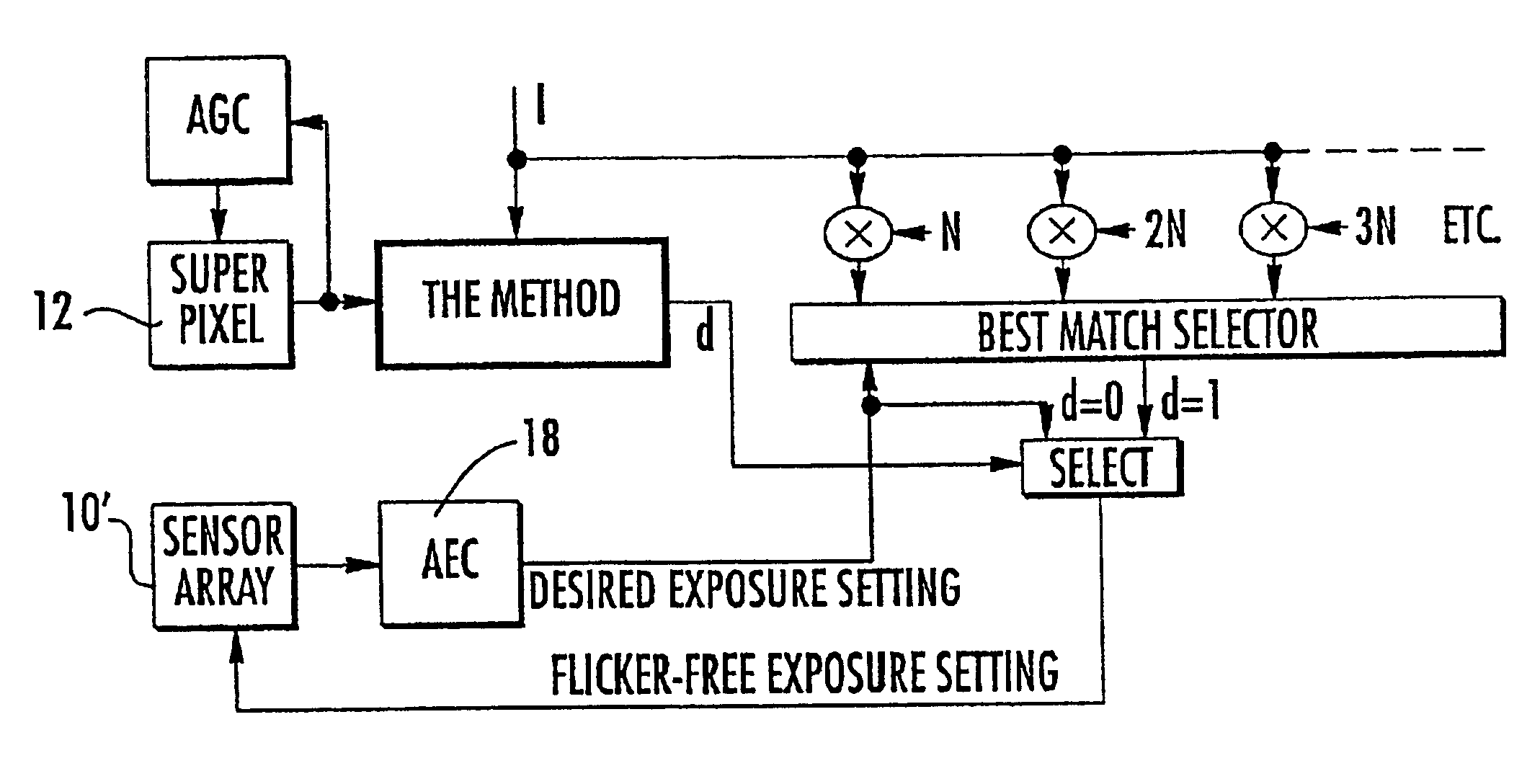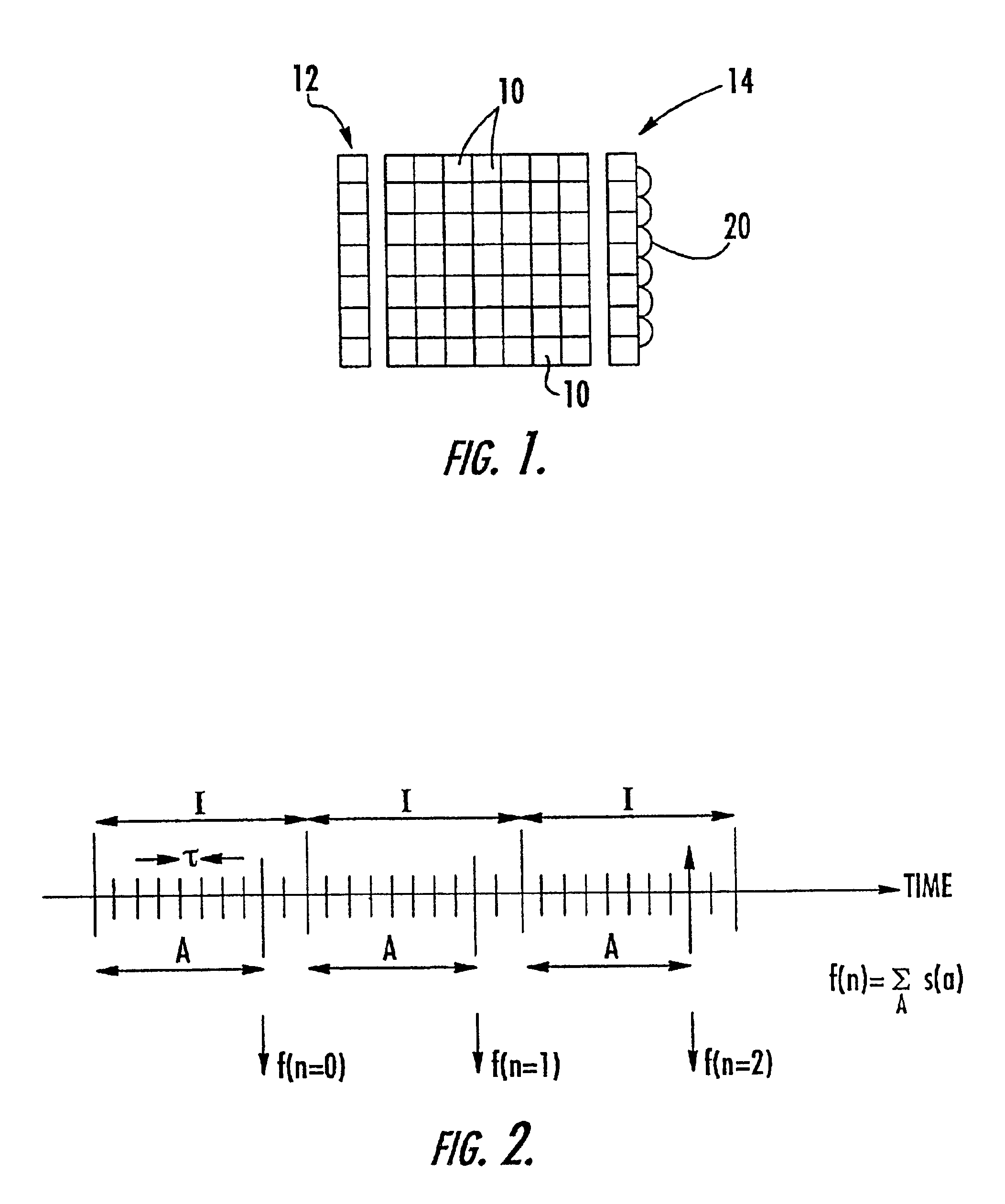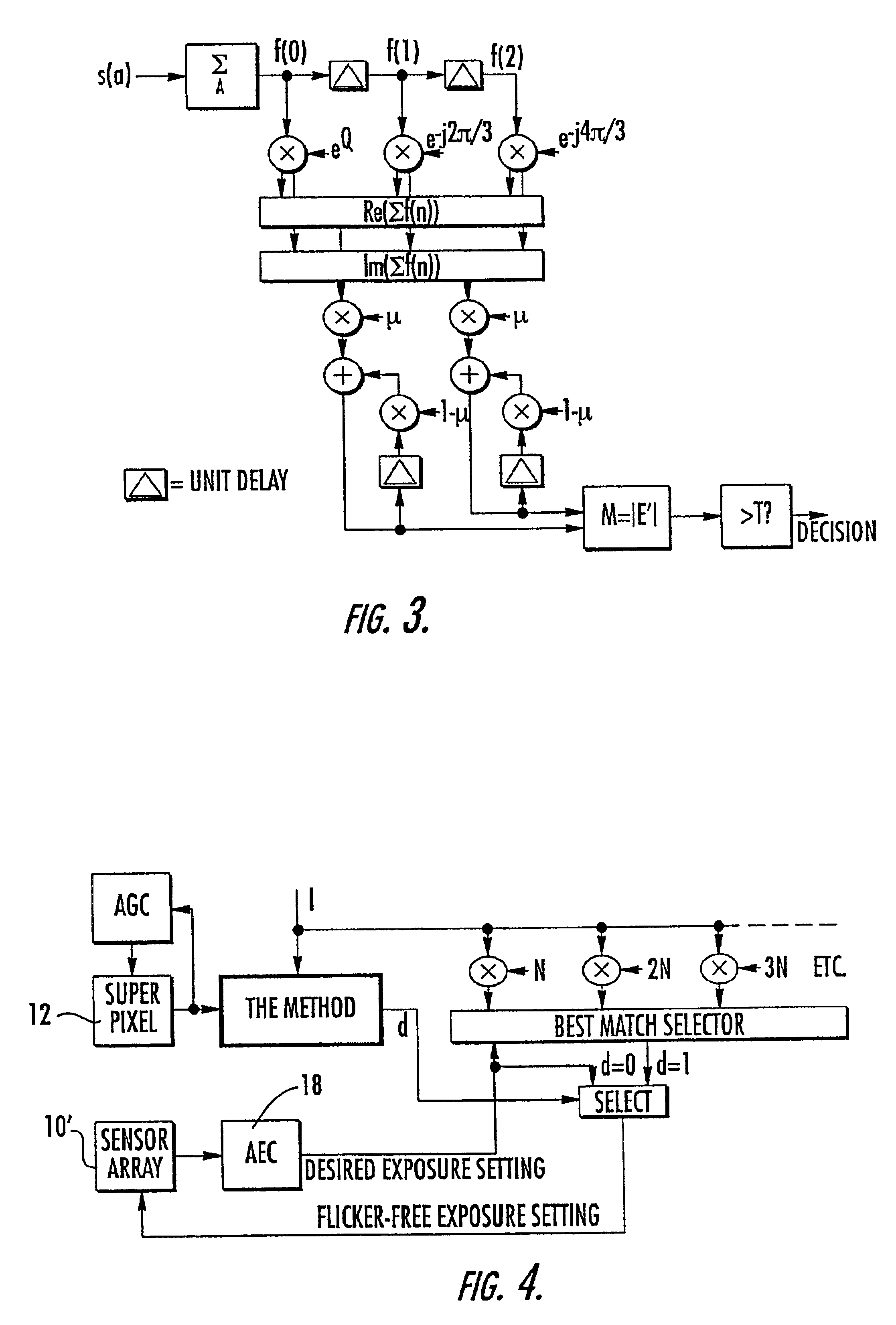Method of detecting flicker, and video camera using the method
- Summary
- Abstract
- Description
- Claims
- Application Information
AI Technical Summary
Benefits of technology
Problems solved by technology
Method used
Image
Examples
Embodiment Construction
[0020]Referring to FIG. 1, a photosensitive array comprises a main array of pixels 10. It will be appreciated that FIG. 1 is highly schematic, with only a small number of pixels 10 being shown. Additionally, the photosensitive array comprises one or more (in this embodiment, two) super-pixels 12 and 14. Each of the super-pixels 12, 14 differ from the pixels 10 of the main array in two principal ways.
[0021]The super-pixels 12, 14 are physically large in comparison to the pixels 10 of the main array so that they may stand a better chance of imaging some part of the scene which contains a flickering light source or reflects such a flickering source. In this example, each super-pixel is one entire column of photosensitive pixel elements 10 which have been electrically connected in common.
[0022]The super-pixels 12, 14 are exposed and sensed in a manner independent from the pixels 10 of the main array. While each line of the main array is sensed at the frame rate dictated by each applicat...
PUM
 Login to View More
Login to View More Abstract
Description
Claims
Application Information
 Login to View More
Login to View More - Generate Ideas
- Intellectual Property
- Life Sciences
- Materials
- Tech Scout
- Unparalleled Data Quality
- Higher Quality Content
- 60% Fewer Hallucinations
Browse by: Latest US Patents, China's latest patents, Technical Efficacy Thesaurus, Application Domain, Technology Topic, Popular Technical Reports.
© 2025 PatSnap. All rights reserved.Legal|Privacy policy|Modern Slavery Act Transparency Statement|Sitemap|About US| Contact US: help@patsnap.com



